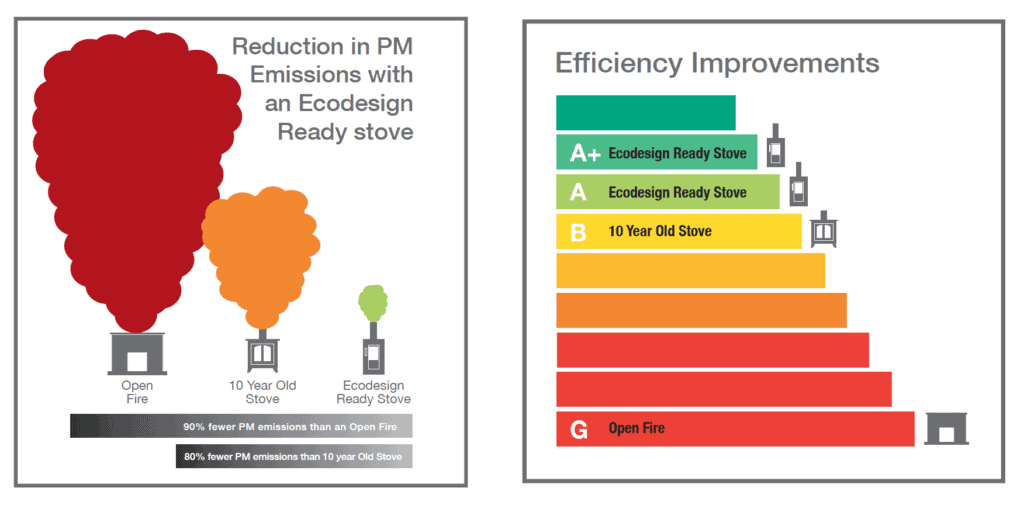 The SIA – The Stove Industry Alliance is an organisation that aims to promote and explain the benefits and environmental advantages of stoves as heating appliances.,
The SIA – The Stove Industry Alliance is an organisation that aims to promote and explain the benefits and environmental advantages of stoves as heating appliances.,
Their objectives are:
.
- To lobby and influence government on legislation affecting stoves and to promote their benefits and environmental advantages.
- To promote and explain the benefits and environmental advantages of stoves as heating appliances.
- To maintain an independently audited system to monitor stove sales trends in the UK.
- To provide a brief to HETAS of those issues which fall within HETAS’s remit and are necessary to fulfil the objectives of the SIA.
- To promote the nature of SIA member’s products and services and how to assess the quality, safety and efficiency of these products.
- To emphasise that the members of the SIA commit to ensuring that their products meet the appropriate standards of quality, safety and efficiency.
Below are a number of points that have been outlined by the SIA, to help answer key questions surrounding stoves and the burning of wood. Sadly, in the media there has been sloppy reporting, namely classifying the burning of all wood all together, whether it’s an inefficient fire or high efficiency wood burning stove.
The points below have been provided to us from the SIA to help clear up any current misconceptions or confusion.
1. I’ve heard wood burning stoves might be banned?
There are no proposals to ban wood burning stoves. Defra has included wood burning stoves in their Clean Air Strategy, and they are recommending installing SIA Ecodesign Ready stoves and using Ready to Burn wood fuel. The Mayor of London has also given the same advice in adverts that he paid for in the Evening Standard. You can be confident buying an SIA Ecodesign Ready stove that they are not going to be banned.
2. I’ve heard that wood burning stoves give off a lot of air pollution and particles.
All wood combustion will give off some particles but a modern stove burning the right fuel has very low levels of emissions. This is why they’re being supported by Defra and the Mayor of London. A modern SIA Ecodesign Ready stove will produce 90% less emissions than an open fire and 80% less emissions than an average 10 year old stove. This is based on independent test results from an accredited laboratory.
3. I’ve heard that 38% of particulate emissions (PM’s) come from wood stoves?
This figure has been in the press, but is based on the proportion of additional particulates from all wood burning over and above the normal level of particulates that exists in the urban environment from normal activities throughout the year including transport. If all particulates are considered then the figure comes down to around 16%, which covers all wood combustion including open fires, incinerators, bonfires and stoves. Best estimates of the particulates attributable to stoves only are around 3%. Furthermore as much of this will be from older stoves, by replacing these with modern SIA Ecodesign Ready stoves, the emissions could be reduced by a further 80% to less than 1%.
4. Is wood a sustainable resource?
There is enough home-grown wood to ensure it is sustainable. Furthermore, new SIA Ecodesign Ready stoves are more efficient than either an open fire or a ten year old stove and therefore use less logs to generate the same heat output.
5. What is different about an SIA Ecodesign Ready stove?
SIA Ecodesign Ready stoves have been independently tested to verify that they meet the forthcoming Ecodesign test criteria that will be introduced as a requirement in 2022. These stoves have been tested to ensure low outputs of CO, OGC’s, PM’s & NOx, whereas standard CE approved stoves only have to pass a far easier standard on CO. SIA Ecodesign Ready stoves also have to have efficiency of at least 75% as opposed to the 65% requirement for a standard CE approved stove.
6. Are wood burning stoves at all “green”?
Yes, wood burning stoves are a genuine renewable low carbon method of heating, and the modern stoves also have low levels of emissions. A key aspect here is the carbon neutral nature of wood burning, as the trees remove as much CO2 during their lives as they produce being burnt in a wood burning stove.
Finally, another point well worth making sure the public are aware of, is that all the emissions figures quoted included are for ALL wood burning not just stoves. This means they include bonfires, fire pits, chemineas, bbq’s, pizza ovens, open fires & incinerators. There has been some lazy / inaccurate press coverage where this has all been labelled as coming from stoves, which clearly is not the case.
Two infographics which demonstrate some of the above points are:









